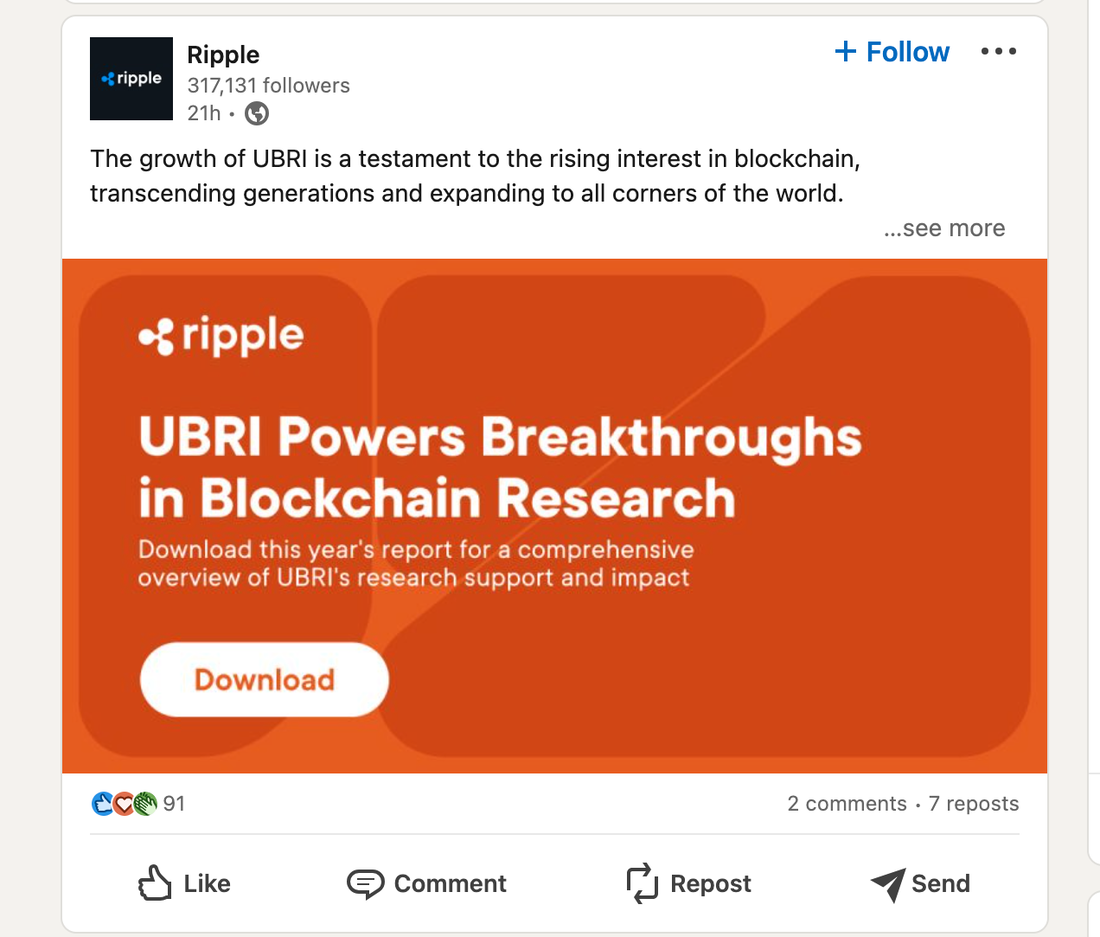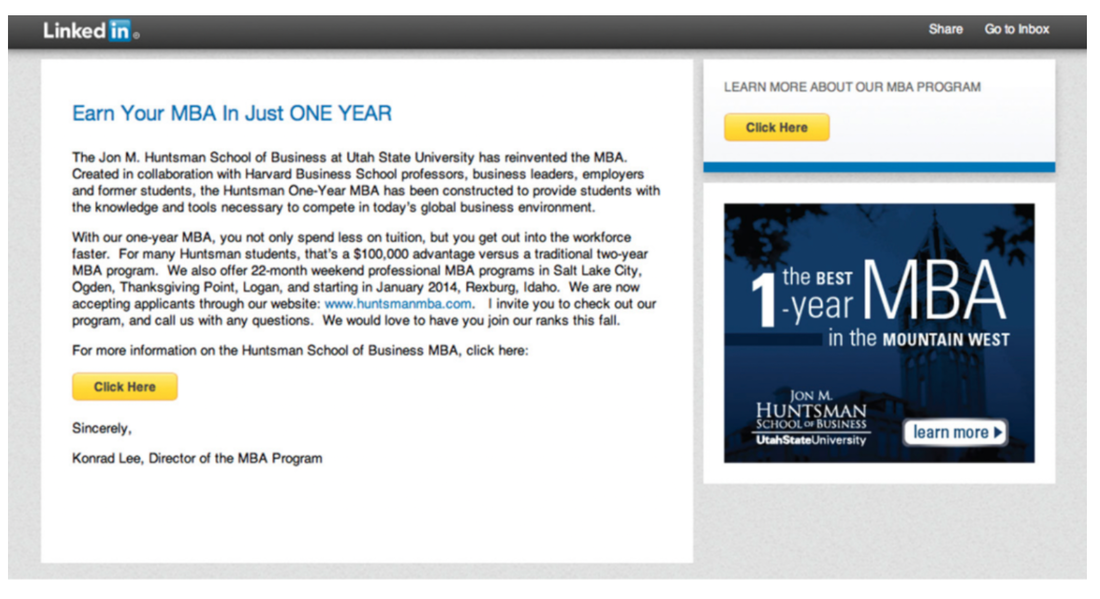|
To be honest, sometimes I, too, forget that LinkedIn is a social media platform and ripe for social media marketing. Its personality is so different from TikTok or Facebook, so much more serious than them. LinkedIn is the professional’s social network. These days, many employers and applicants find themselves spending time on the platform, but it’s more than just a networking site for people on either side of the job search. Today, it is a potent tool for lead generation, networking, and advertising. With over 950 million users, LinkedIn serves as a vast marketplace for businesses to showcase their products, services, and brand values. It’s more important than ever for business professionals to learn how to develop a LinkedIn marketing strategy. The platform’s character is unique. As you develop a social media strategy for it, it’s important to keep in mind these LinkedIn marketing tips that leverage its particular strengths. Let’s get serious about the serious person’s social platform and create content that educates, engages, and entertains. The potential of LinkedIn in your marketing With LinkedIn, you can improve your business’s reach. For example, international brands might take advantage of a user base spanning more than 200 countries and territories. However, LinkedIn is smaller than other social media platforms such as those operated by Meta. LinkedIn’s real value proposition lies in its ability to connect you with a better-fitting niche audience, improving your lead generation and helping you build an engaged community. Major players in the following industries have made a LinkedIn social media strategy increasingly popular:
It’s more common for business-to-business (B2B) companies to have a LinkedIn marketing strategy than for business-to-consumer (B2C) brands, but the platform is ripe with potential for both types of marketing. Lead generation Grow your number of followers — and potential clients — by publishing high-quality content. Like other social media platforms, LinkedIn also offers opportunities for sponsored content, in which you can pay to promote your posts to a new audience. LinkedIn excels when it comes to ad-targeting options, the choices marketers have to narrow their chosen audience. It allows you to target people by detailed information about your prospects’ industries and professional roles. This ability particularly helps B2B brands who need to find leads within other businesses, but everyone can use it to reach their ideal customers more efficiently. Community and engagement Unsponsored content includes posts on company pages, personal profiles, and articles. Businesses use it to engage and connect with their audience without paying for promotion. LinkedIn’s users are highly engaged. In the United States, 69% of users check in on the platform daily, with a further 15% using it several times a week. These users aren’t simply scrolling through posts without paying attention. In 2022, the average rate of engagement per impression was 3.16%. That’s substantially higher than Instagram (0.6%), Facebook (0.15%), or X, formerly known as Twitter (0.05%). This high level of engagement translates into increased visibility and higher conversion rates. Not to mention, it’s always more satisfying to talk to people when you know they’re listening. Credibility LinkedIn lends itself to thought leadership and high-value industry content. Brands can use it to improve their reputation in a field. It’s also one of the most trusted social media platforms, indicating that users assign posts a higher level of authority. Use LinkedIn to show off your expertise. Publish all of that hard-won, niche-specific know-how you’ve acquired over the years to an audience capable of appreciating it. Key steps to kickstart your LinkedIn marketing strategy A successful LinkedIn strategy lets companies expand their digital footprint and drive growth. After signing up for the platform, it’s important to take the right steps to leverage its potential. Identify your marketing goals and objectives What do you hope to achieve through LinkedIn? A clear vision is crucial. Take the time to define SMART goals, objectives that are:
Think of it this way — it’s impossible to know whether you’ve won without knowing which game you were playing. There are many possible objectives for LinkedIn marketing. Increasing brand awareness on the channel Reach a larger audience and work toward widespread brand recognition. Get your name and content in front of a large, relevant audience. Build to higher levels of recognition, making viewers increasingly likely to connect your brand to your mission. Generating new leads One of the main goals of any marketing strategy is to attract potential customers. Focus on creating compelling content that encourages LinkedIn users to fill out a form or otherwise contact you. Driving website traffic Use LinkedIn to direct users to your website. Announce new or special offers and tease blog articles on LinkedIn with a description or excerpt that encourages readers to click on the link. Increasing engagement Marketing on LinkedIn can help you build brand loyalty and community. Generate conversations by inviting others to interact with your posts. Engage with their material, too, if relevant. Establishing thought leadership LinkedIn is a great platform to share insights and show expertise in your field. If you aim to establish thought leadership, consider publishing insightful articles or hosting webinars on your area of expertise. Define your target audience and ideal customers Once you know your own mind, a successful LinkedIn marketing strategy requires you to know the minds of your audience. Start by defining your ideal customer persona. Because this is a social networking platform for professionals, focus on professional attributes. What’s their job role? What industry do they work in? What are their interests? Once you have a clear picture, you can tailor your posts accordingly. LinkedIn post best practices include audience-focused content, content created to serve a particular audience’s needs and interests. Consider joining LinkedIn groups that align with your target market. These groups offer valuable insights into your audience’s pain points and interests. It’s an opportunity for you to engage directly with potential customers. As you continue to use the platform, pay attention to your audience demographics. Are you reaching the right people? If not, is the problem with your content strategy or your definition? If you choose to pay for advertising, you’ll also be able to segment and target based on audience profiles. Optimize your LinkedIn business profile for business success Make sure that your business profile is optimized as part of your LinkedIn business strategy. People will want to know exactly who you are and what you offer. Once you have the following elements in place, don’t set and forget your profile. Keep it updated as your business evolves. Craft a compelling headline and summary Your headline and summary are often the first things people see when they visit your LinkedIn profile. They should instantly communicate who you are and what you offer, enticing visitors to learn more. Your headline should clearly articulate your business’s core offering. For instance, if you run a digital marketing agency specializing in SEO, your headline could be “Providing Expert SEO Solutions for Growing Businesses.” Your summary allows you to expand on your headline, providing a deeper look into your business. Include details about your mission, values, and key service. Showcase your experience and expertise This is no place to be modest. Brag away! LinkedIn is the perfect platform to showcase your business’s experience and expertise. Detail past projects, successful campaigns, and major accomplishments. Utilize professional visuals Visuals can significantly enhance your LinkedIn profile. They make it more engaging and can illustrate your work in a way that words alone cannot. Keep all images highly professional in tone and appearance. Photographs should be polished and, ideally, relevant to your work. Include relevant keywords Including relevant keywords throughout your profile can increase your visibility in LinkedIn search results. Think about the terms potential clients might use when searching for businesses like yours, and incorporate these into your headline, summary, and experience sections. For example, a continuing education company might highlight education keywords like “professional development,” “adult education,” and “online learning.” Remember, keyword stuffing can make your profile seem spammy and may be penalized by LinkedIn’s search algorithm. Instead, aim for the natural integration of keywords into your profile content. Develop a content strategy that resonates How can you best provide value to your audience? Here are five actionable tips to help create a social media strategy for LinkedIn. Share valuable industry insights and tips Sharing industry insights and tips not only positions your brand as a thought leader but also provides value to your audience. For instance, if you’re a financial planner, you could share tips on best practices or insights into the latest market trends. Not sure what people want to learn? Take LinkedIn’s content suggestions tool for a spin. LinkedIn’s AI inspiration engine asks you for your industry, location, and seniority. Then, it delivers trending articles and topics of conversation for your target market. Create engaging visual content Visual content significantly increases LinkedIn engagement rates. Material with quality images attracts more comments, and it tends to make up more than half of a brand’s posts. LinkedIn often lends itself to educational content, and visuals also help your audience understand and retain key points. You can improve accessibility by accommodating multiple learning styles while enriching the experience for all. Don’t limit yourself to static images. LinkedIn is particularly popular with video marketers, with 79% of them publishing there. Share product demos, interviews, and behind-the-scenes footage. Develop a video marketing strategy for the platform or incorporate it into your ongoing marketing efforts. Share success stories and case studies Sharing success stories and case studies allows you to demonstrate the impact of your product or service, providing potential customers with tangible evidence of what you can achieve. Use LinkedIn articles for in-depth content LinkedIn articles allow you to dive deeper into topics, offering your audience in-depth insights. It’s the best platform by far for longer, written pieces. Articles establish your expertise and keep your audience engaged with your brand. They’ll take some effort, though. The most-shared articles on LinkedIn are between 3,500 and 4,000 words. Popular content includes actionable self-help material and interviews with industry leaders. Build and nurture your LinkedIn network It really is a social platform. LinkedIn marketing strategy includes developing the social networks your brand needs to grow. You have the opportunity to find more than an audience here — you can find a community. Inclusivity and diversity LinkedIn gives you the opportunity to reach and connect with people that you wouldn’t otherwise encounter. A diverse network can provide a breadth of perspectives, ideas, and opportunities. Seek to connect with people from different industries, roles, and backgrounds. Their contributions will broaden your perspective. Inclusive networking leads to a broader range of potential sources for social media content curation. Content marketing is about finding the right material to share as well as creating your own. Go beyond announcing your brand values and embody them when you spotlight creators from often marginalized groups. Connecting with others Start by connecting with people and brands you already know, but you can also reach out to other professionals and influencers in your industry. You never know what could lead to the next valuable account or partnership. When sending a connection request, always include a personalized note explaining why you wish to connect. This increases the likelihood of your request being accepted and paves the way for a future relationship. Consistent engagement A key part of social media for beginners is learning how to listen and participate in the community. Like, comment on, and share your connections’ posts. You should also respond to comments, invite feedback, and participate in discussions. These actions show that you value your audience’s input. Leverage LinkedIn advertising and sponsored content LinkedIn advertising is growing. In 2022, the platform generated $5.91 billion in ad revenue, a number projected to increase to $10.35 billion by 2027. You can run advertising through the LinkedIn campaign manager, which allows you to choose your objective and define your audience. As I mentioned earlier, LinkedIn’s comprehensive targeting options make it easy for you to reach the right people based on demographics, job title, industry, company size, and more. You can also target current contacts with special promotions, ensuring that clients and prospects see a post. No matter how effective the targeting, the success of a paid LinkedIn marketing strategy largely depends on the quality of your content. Sponsored content should still create value, alerting people to special offers or encouraging them to take a look at potentially useful material. Measure, analyze, and refine your strategy The most effective marketing strategies are constantly a work in progress, informed by ongoing data collection and reassessment. Track key performance metrics (KPIs) Use social media tools to publish content and evaluate its performance.
The KPIs that best measure social media performance depend on your primary objective. For some business owners, it makes sense to focus on engagement rates, while others should look at impressions and page views as brand awareness metrics. You can measure lead generation through CTRs, conversion rates, and new connections or followers. Finally, engagement, shares, and time spent all point toward improved thought leadership and reputation. Analyze content engagement and reach Use metrics to refine content as well as strategy. Which pieces gain the most views, likes, and comments? Build on past successes by using them as a model for future content. Refine your strategy based on insights Once you’ve gathered all the necessary data, it’s time to dive deep into analyzing the insights gained. This analysis will help you identify patterns, trends, and areas for improvement. For example, if your data shows that blog posts with infographics are generating more engagement, consider incorporating more infographics into your content strategy. If your reach is low, explore new ways to promote your content and expand your audience. Finally, don’t be afraid to experiment. Try something new, or evaluate different posts with A/B tests. Develop your brand presence today and get started on LinkedIn A strong LinkedIn marketing strategy can be a powerful part of your digital marketing efforts. Establish yourself as an authority in your field and build the community that surrounds and includes your brand. But I’ve gone on long enough. LinkedIn marketing is about finding your voice. Remember — the first step is to determine your primary objective and target audience for the platform. Are you looking to expand your professional network, find new potential customers, build your reputation as an expert, or increase engagement within your brand community? Once you know this, define the likely characteristics of this audience and the type of content they will find valuable. How does this group match or differ from your audience on other channels or social networking sites? Let these visions guide all LinkedIn strategies for business. Once you have the necessary clarity, you can start working on your profile, connecting with people, and publishing content. Success on LinkedIn may not happen overnight, but the platform rewards time and dedication. So why wait? Get started today. Source: https://www.constantcontact.com Image Credit: LinkedIn
0 Comments
Leave a Reply. |
Membership is open to businesses and organizations interested in increasing visibility and brand awareness in Westchester County and surrounding areas.
Archives
May 2024
Categories
All
|






 RSS Feed
RSS Feed